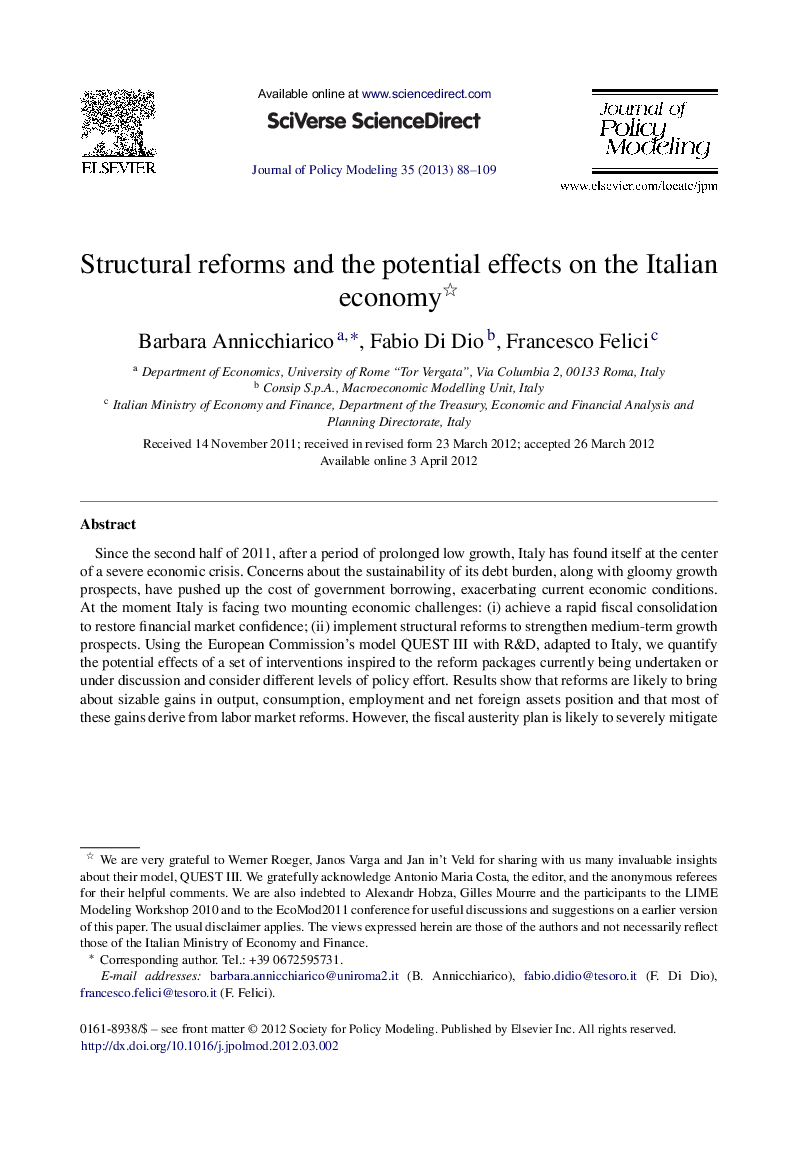| Article ID | Journal | Published Year | Pages | File Type |
|---|---|---|---|---|
| 967907 | Journal of Policy Modeling | 2013 | 22 Pages |
Since the second half of 2011, after a period of prolonged low growth, Italy has found itself at the center of a severe economic crisis. Concerns about the sustainability of its debt burden, along with gloomy growth prospects, have pushed up the cost of government borrowing, exacerbating current economic conditions. At the moment Italy is facing two mounting economic challenges: (i) achieve a rapid fiscal consolidation to restore financial market confidence; (ii) implement structural reforms to strengthen medium-term growth prospects. Using the European Commission's model QUEST III with R&D, adapted to Italy, we quantify the potential effects of a set of interventions inspired to the reform packages currently being undertaken or under discussion and consider different levels of policy effort. Results show that reforms are likely to bring about sizable gains in output, consumption, employment and net foreign assets position and that most of these gains derive from labor market reforms. However, the fiscal austerity plan is likely to severely mitigate the positive effects of the interventions, especially during the earlier phases of the reform process. Most of these losses accrue to liquidity-constraint households who would experience a drop in consumption.
